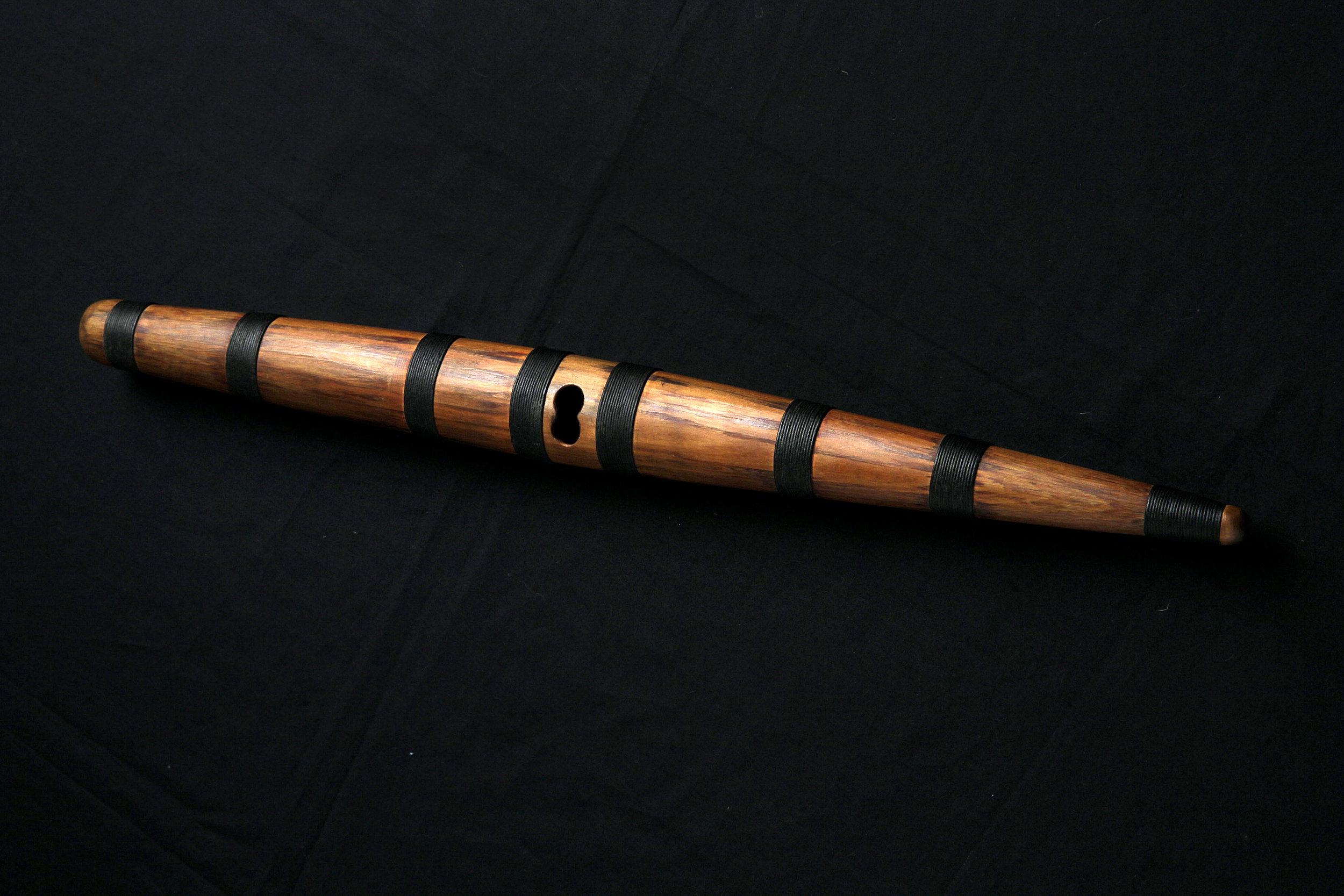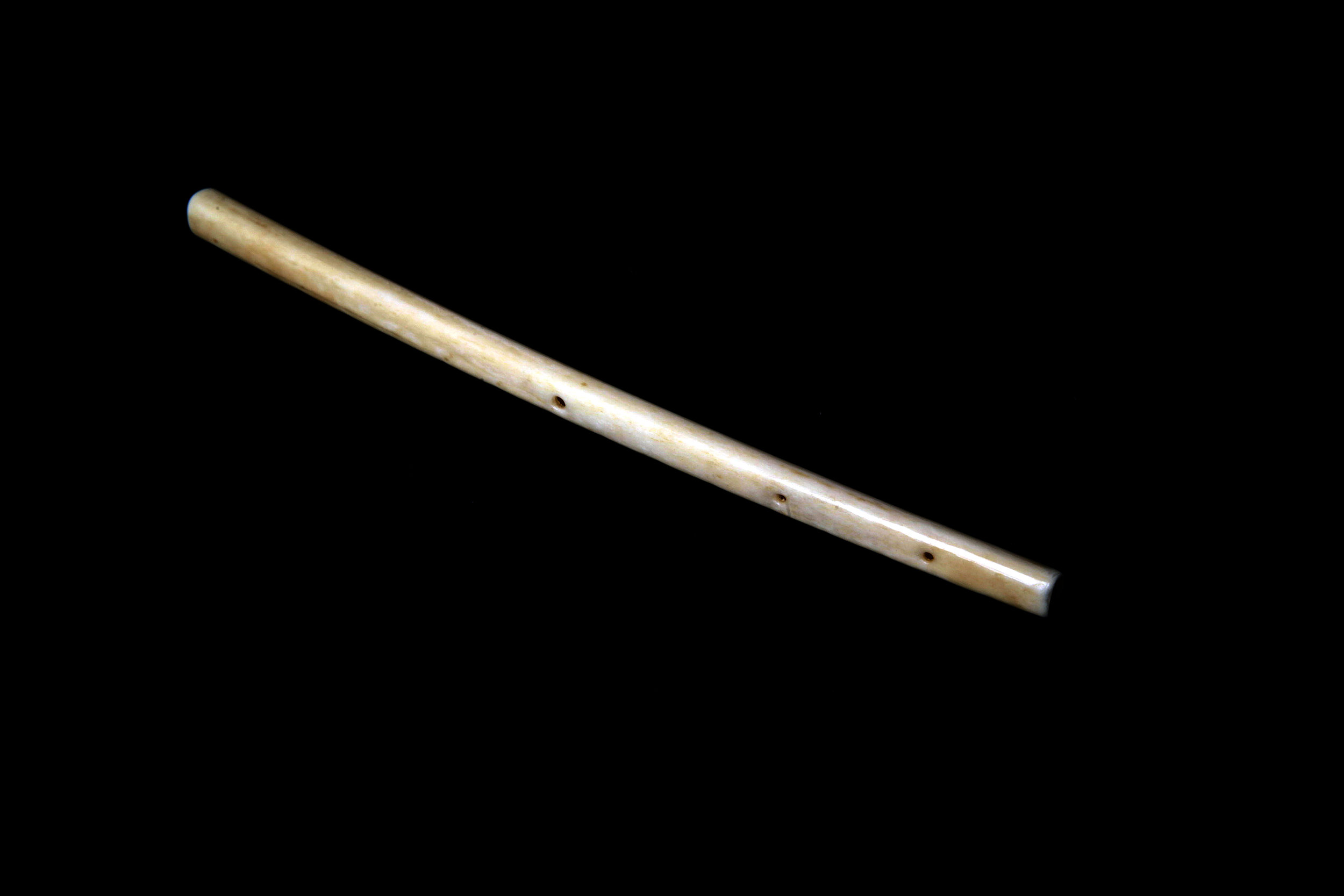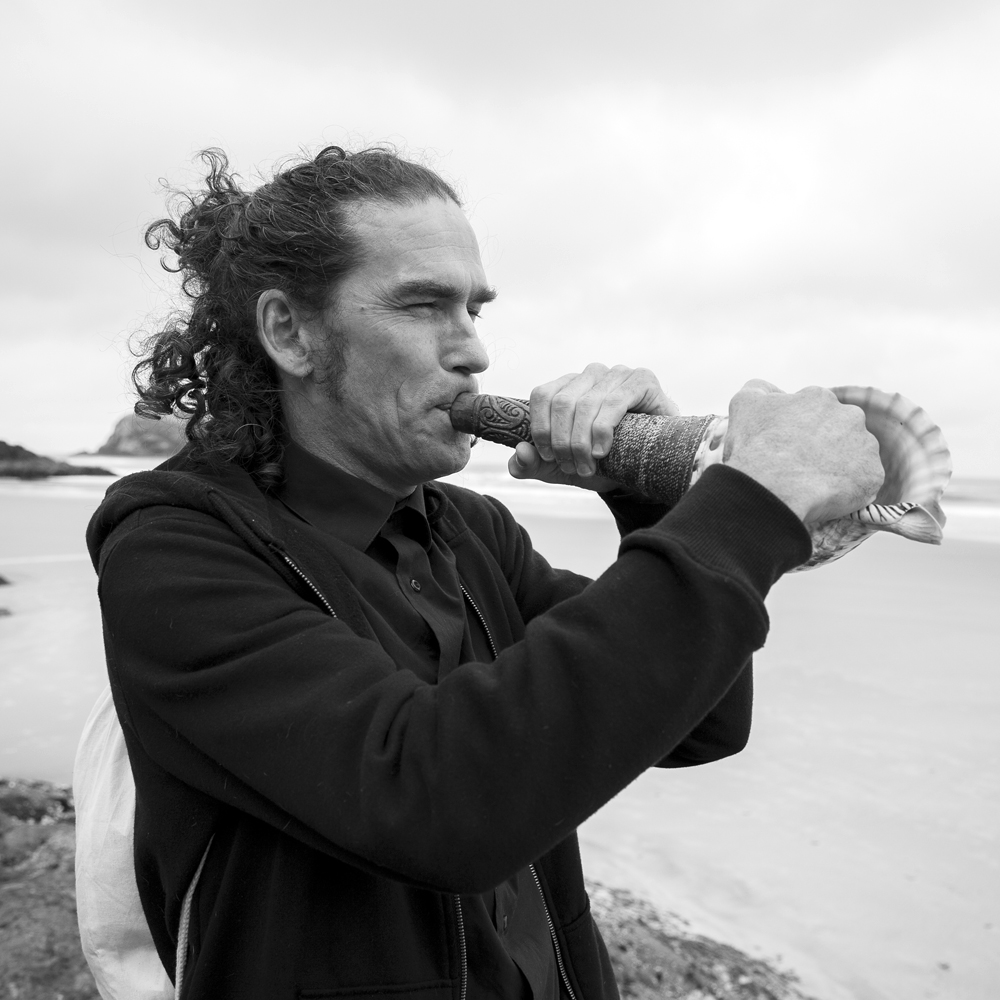Jumping The Gap: The Distance Between Taonga Pūoro and Experimental Music
By Rob Thorne
Experimental music is about innovation and the revival of taonga puoro (traditional Maori musical instruments) is about tradition. Yet a large part of reclaiming, re-learning, rediscovering and reviving the traditions of taonga puoro has come out of improvisation. Improvising construction, improvising playing methods and styles, improvising how something should sound according to specific memories of people present and passed, improvising whole instruments from scant and rare, or singular, historical descriptions, and sometimes even improvising on knowledge when large parts of accounts have been mislaid/covered over (lost).


One blank area of knowledge occurs in regard to the pūtōrino (bugle flute). It is known that it was used musically in a duet accompaniment with the kōauau (short open-ended tubular flute), as in the story of Tūtānekai, (Hinemoa) and Tiki from Rotorua. But how? One might assume (improvise) that the pūtōrino plays a drone bed underneath the kōauau, as this is what this instrument seems to do well, but we cannot be certain. The pūtōrino can be played both as a flute and a horn. Maybe it was trumpeted, while the kōauau played a flute melody over the top. As a flute, because of its technically monotonous yet harmonic abilities, maybe it was played as a rhythmical harmoniser. The principles of action archaeology determine that we can gather good (acceptable) evidence as to how things were done, or achieved, by putting theory into practice and trying things out. By experimenting. Materially, we collect and observe physical evidence from artifacts, and then ‘jump the gap’ between what we know (‘what’), and what we theorise (‘if’), with experimental action (‘how’). Musically we do this by improvising: working with the ‘what’ and ‘if’ to develop the potential ‘how’. No matter what we discover through practice (action), we need to remain critical of what we ‘discover’. Large amounts of revivalist learning in this era in regard to playing style, technique and method has come about through calculated trial and error i.e. improvisation. New practices, and even new traditions have been developed. A good example of this is the playing of the pūtōrino (often horizontally) across the central aperture. There is no provenance (traditional or historical source) for this being done, yet it makes a fantastic and uniquely ‘Maori’ sound and is more than possible – it is easy. As a result, the method has become recently popular. This is a good reminder in the science of cultural rediscovery that ‘just because something is possible (now), does not mean it was done (then)’. A culture governed and bound by ritual, belief, meaning and magic may restrict the way things are done for many reasons that have nothing to do with achievability or modern logic.

Innovation cannot exist without tradition, and tradition should never be considered as static or fixed. Culture changes and flows, within which traditions can be strengthened or dwindle. Tradition requires innovation to challenge and confirm its foundation. Many cultural traditions, and their supporting legends and myths involve great innovators who break with tradition to change the way things are done and perceived. Maui was one such hero in Maori culture.
Experimental music is about discovery while taonga puoro is about rediscovery. Unlike other ancient musical traditions, taonga puoro lacks a consistent, fixed body of instrumental musical learning into which a student can engage and study from the ‘inside’. Many musical traditions involve a master/apprentice mode of knowledge translation. In some, the master spends their entire career working with a set of musical pieces and skills that are unique to them. These are their cultural responsibility, and are passed to them by their master, and so on, through the ages. The musical culture of taonga puoro is what might be termed as a ‘broken tradition’ – at some point the knowledge became discontinued. As a result, there is now virtually no traditional ‘inside’. The tradition from which a student learns might be musical in regard to song, or dance, of which there is a large amount, or the learning might be historical or cultural in regard to oral tradition, stories, whakapapa (genealogy) or mythology, but neither of these are specifically ‘insider’ instruction into musical instrument practice.


At some point the instrumental musician must ‘jump the gap’, and improvise from their wider non-specific (non-instrumental) knowledge, to play what they think is most suitable within their current context. Such learning is knowledge based, rather than inherently skill and practice based. Currently with taonga puoro, to learn from a master is to learn (often basic to intermediate) usage, protocol, and technique, rather than master skill sets and techniques or specific sets of musical pieces and the finer intricacies of how these should be played according to tradition over the ages. Process and outcomes therefore are currently indeterminate. The rest of the students learning, and mastery, is then achieved through a personal quest for knowledge and skill. This method though may be a tradition of sorts. One story I have been told relates to the traditional learning of pūtōrino, and was implied as regionally specific. The student was given an instrument by the teacher and sent off into the bush, with instruction to not return until they were able to play. Such a tradition could potentially determine a very wide range of playing styles, techniques and skill levels, with a vast variety of self-styled methods and musical compositions.
Rob Thorne (Ngāti Tumutumu), a Palmerston North musician of more than 30 years experience,
has been researching, playing and performing taonga puoro since 2001.
http://www.robthorne.co.nz/

Discovering (mining, finding, creating) sound, and organising it using musical criteria is one element of experimental music. This process of discovering sound, and exploring musical (and non-musical) criteria involves deconstructing and reconstructing our understanding of what music is, and this is a key principle of experimentalism. Taking what we know and reorganising and reworking it into something that we (or the listener) no longer recognises as music. Of course, the more we do this, the more we become familiar with what we do, to the point of constructing whole new sets of understanding and criteria. Soon enough, we perceive it as music. I like to use a terrain metaphor, where actions, ‘rules’ or boundaries, and criteria are roads and pathways within networks or maps, and differing outcomes are whole new places. Innovation is often about deconstructing traditional process and then reconstructing new outcomes. While the revival of taonga puoro as a tradition is similar to this process as it deconstructs to reconstruct, it may be more about constructing new processes with whole new outcomes that, with time, will be perceived and accepted as tradition. Revitalisation hinges the new door onto the old door frame, requiring a balanced (managed contradictory) belief that tradition is fixed AND fluid. It is not so much about the door frame or the door, but the open threshold and that we step through to the other side.This revival puts us all in a unique position ‘at a new beginning of time’.

Taonga puoro has been able to develop as a cultural and musical field because of its ability to work laterally and experimentally with other sources and fields of knowledge and practice. With a combination of actual and re-imagined tradition and innovation it seeks a form of renovation that retains and rebuilds the old while utilising the new.
As an experimental sound artist and musician the daily learning and practice of taonga puoro revival has enabled me to not only deconstruct sound and tradition, it has empowered me to reconstruct my identity as a Maori. Through the discovery of sound, and the development of skill I have rediscovered who I am and come to understand more the relationships that I operate within, and that operate within me, as an individual and as a member of New Zealand society, and the cultures to which I belong.
Meanwhile, I gain great personal satisfaction from creating ‘new’ & modern music with ‘old’ & ancient instruments.





